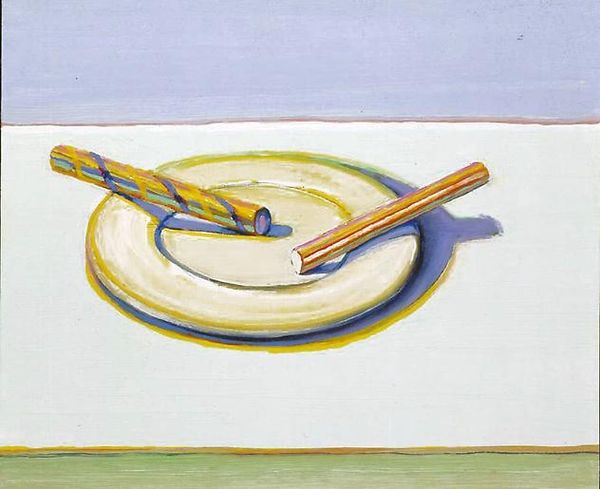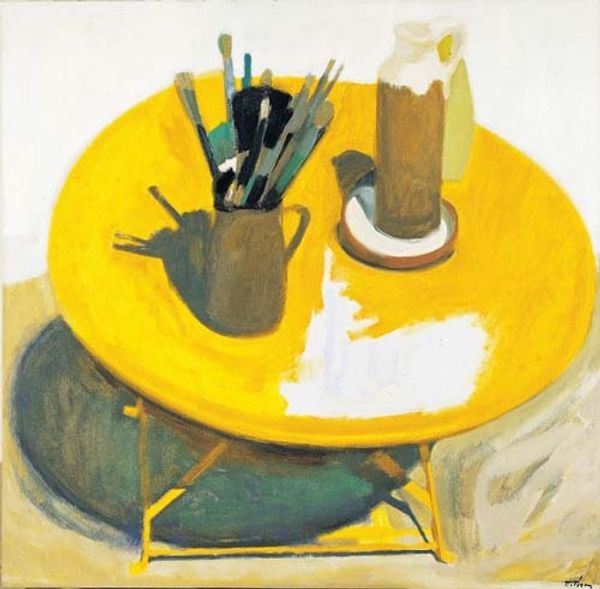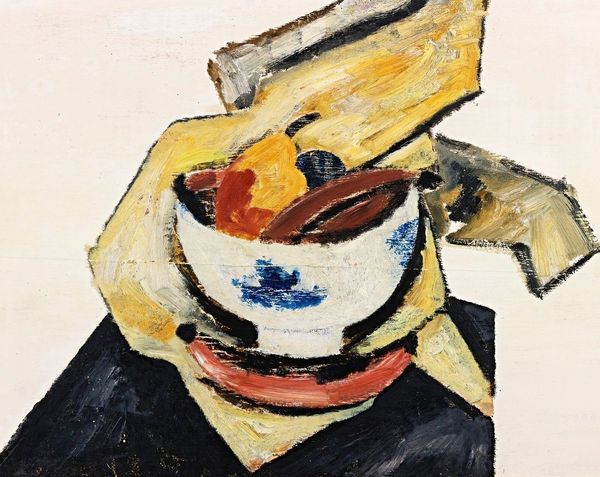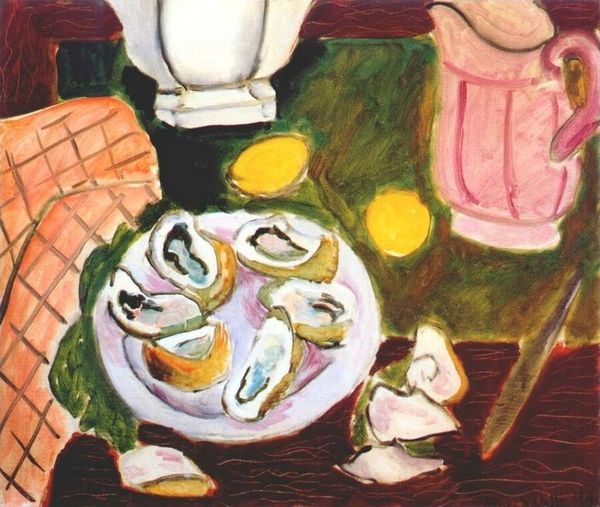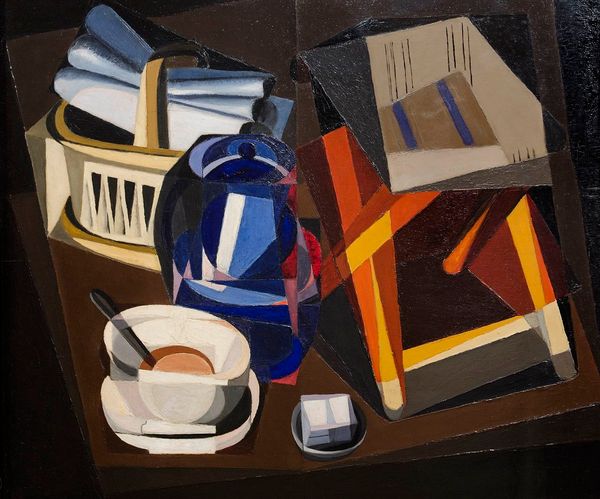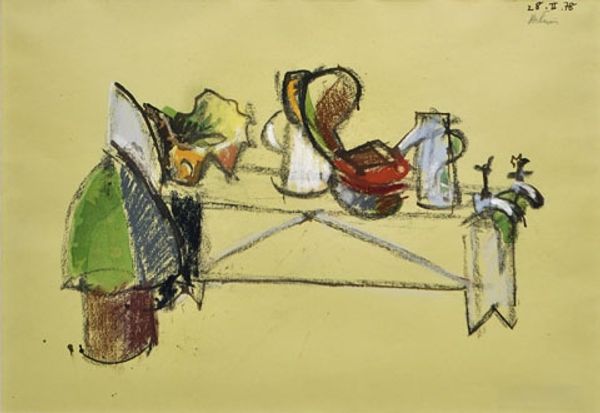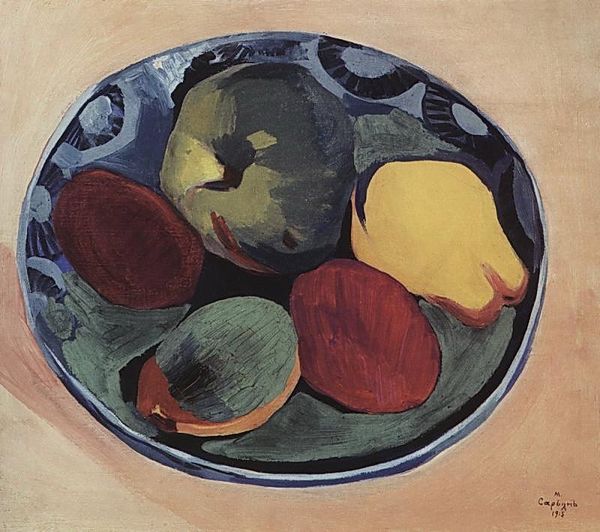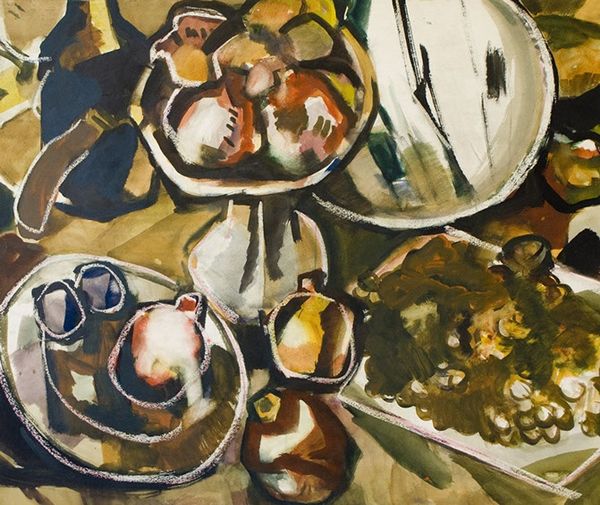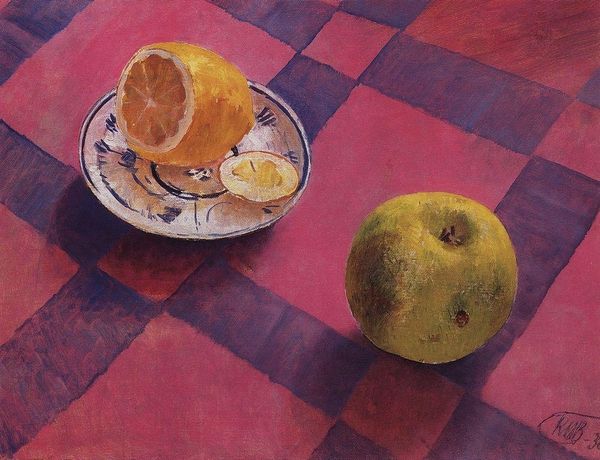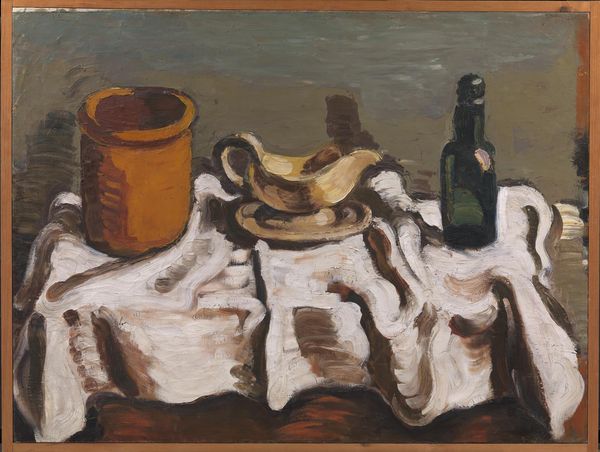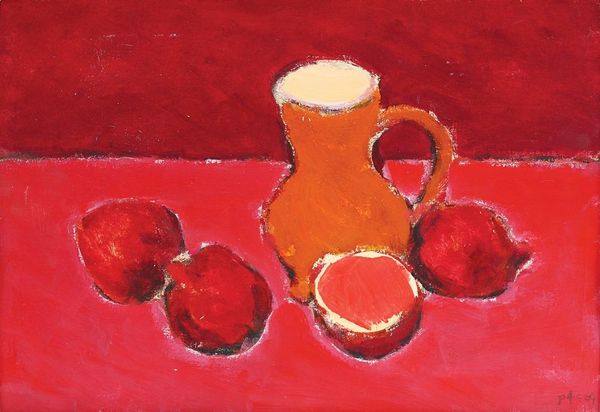
oil-paint, impasto
#
acrylic
#
oil-paint
#
oil painting
#
impasto
#
bay-area-figurative-movement
#
acrylic on canvas
#
pop-art
#
modernism
#
watercolor
Dimensions: 50.8 x 76.2 cm
Copyright: Wayne Thiebaud,Fair Use
Editor: This is Wayne Thiebaud's "Pies, Pies, Pies" from 1961. It appears to be painted with oil paint, perhaps with impasto because the paint looks so thick. It's just rows of pie slices, and there's something so compelling, almost mesmerizing, about the sheer repetition of these pies. What strikes you about it? Curator: The relentless repetition speaks volumes. Thiebaud, working within the Pop Art movement, highlights the post-war American obsession with mass-produced goods, particularly food. These pies aren't just desserts; they represent a culture of abundance and consumerism that was becoming increasingly pervasive. What role did art play during that time? Editor: I guess Pop Art reflected that consumerism, right? Sort of holding a mirror up to society? Curator: Precisely. But also consider the institutional framework. Where would art like this typically be shown and who would collect it? Was this celebratory, or a critique, or perhaps both? How would it affect or reflect the viewer in their social and cultural context? Editor: So the gallery setting itself is part of the message? Is that what you mean? The location of this painting frames its meaning. It’s a simple, brightly colored painting, yet it can suggest the culture that made mass-produced pies desirable. I'm also thinking about how accessible this makes the art world. The everyday quality of his subject matter makes it, dare I say, more 'relatable'. Curator: Exactly! Consider too the role of art critics at the time. Were they supportive of this seemingly simple, yet potent, imagery? How did "high" art reconcile with the imagery of everyday life that advertising relied on? Editor: It is interesting how art both responds to culture and can influence its formation too. It almost seems he’s using hyperrealism, though he is Pop Art! Thanks for sharing a deeper perspective. I initially saw sugar, now I see culture! Curator: And that interplay is what makes Thiebaud’s work so enduring. A great reminder that our historical and cultural understanding shapes our interpretation.
Comments
No comments
Be the first to comment and join the conversation on the ultimate creative platform.

